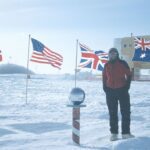Curtin’s researchers are getting into wet and sticky ores to help save the WA mining industry millions of dollars.
The Rio Tinto Centre for Materials and Sensing in Mining (RTCMSM), based at the Bentley campus, will collaborate with Curtin’s Centre for Materials Research (CMR) to characterise and understand the wet and sticky ores phenomena.
RTCMSM director Vladimir Golovanevskiy says the two year project would initially focus on the most critical difficulties – iron ore and bauxite.
‘We’re trying to understand what it is that makes certain materials sticky under certain conditions and when they become sticky this results in all sorts of problems, they clog up processing equipment, they result in increased wear, all potentially leading to significant dollar losses,’ he said.
‘They’re talking about wet and sticky ore costing anywhere between $4-6 per tonne and this year Rio Tinto is going to ship out 200 million tonnes, BHP is going to ship out 150 million tonnes, Fortescue around 25 million tonnes and the smaller mining companies around 50 million tonnes. Some of these ores will be wet and sticky and more difficult to process and you can see how this can add up to result in significant cost to industry.’
Associate Professor Golovanevskiy said the ore stickiness wasn’t caused by contaminants and the wet ore was just as useful as dry ore but required potentially costly processing adjustments.
‘As deposits of dry high-grade ore become scarce, mining companies have to go deeper and quite often mine ore which is below the water table. What it means is that ore comes out of the ground already wet and quite often sticky and that means it needs to be processed differently to dry material,’ he said.
‘Even as recently as 10-15 years ago nobody was mining material from below the water table.’
‘There are methods to process sticky ore but they’re expensive and not always effective and if you think about industry as a whole the majority of all equipment in use today was designed and used in the past 50 years or so to deal with dry ores.’
CMR senior research fellow Rob Hart said their research could help sustain the WA mining industry and address the increasing global problem.
‘Better understanding of the wet and sticky ore phenomena will help to make ores that are currently uneconomic a commercially more viable product,’ he said.
The team of Associate Professor Golovanevskiy and RTCMSM senior researcher Geoffrey Carter, CMR senior researcher Dr. Rob Hart and Professor Arie van Riessen will work with the most advanced material characterisation techniques and a new $2 million Focused Ion Beam Scanning Electron Microscope. Two more RTCMSM staff, Dr. Naoko Zwingmann and Mr. Nobuo Tezuka will also work on the project.


